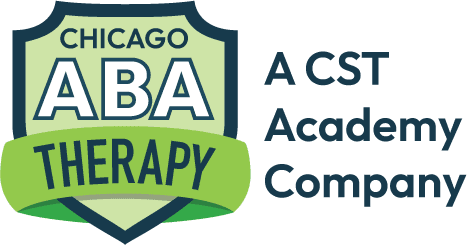Receptive language is a critical component of communication, particularly in the context of Applied Behavior Analysis (ABA) therapy. Understanding what receptive language entails, its role in development, and how it is addressed in ABA therapy can provide valuable insights for parents, caregivers, and professionals working with individuals with autism and other developmental disorders. This article delves into the concept of receptive language, its significance, and strategies used in ABA therapy to enhance receptive language skills.
What is Receptive Language?
Receptive language refers to the ability to understand and process spoken language. It encompasses a wide range of skills, including the ability to comprehend words, sentences, and complex linguistic concepts. Unlike expressive language, which involves producing speech, receptive language focuses on the intake and interpretation of verbal communication.
Receptive language skills are foundational for effective communication and interaction. They enable individuals to follow instructions, understand questions, and engage in social exchanges. These skills are critical for academic success, social integration, and daily functioning.
The Importance of Receptive Language in Development
Receptive language development is crucial from early childhood as it sets the stage for effective communication. Children with strong receptive language skills can understand and respond appropriately to verbal cues from their environment, which facilitates learning and social interaction. Conversely, difficulties in receptive language can lead to challenges in various areas, including:
- Academic Performance: Understanding classroom instructions, reading comprehension, and participating in discussions are all reliant on receptive language skills.
- Social Skills: Engaging in conversations, interpreting social cues, and forming relationships require the ability to understand others’ speech.
- Behavioral Responses: Following directions and adhering to rules often depend on comprehending verbal instructions.
Receptive Language and Autism
Many children with autism spectrum disorder (ASD) experience challenges with receptive language. These challenges can vary widely, from mild difficulties in understanding complex sentences to more significant struggles with basic language comprehension. In ABA therapy, addressing receptive language deficits is a key focus to support overall communication development.
Assessing Receptive Language Skills
Before implementing interventions, it is essential to assess an individual’s receptive language abilities. Various standardized tests and observational methods are used to evaluate these skills, such as:
- Peabody Picture Vocabulary Test (PPVT): This test measures the ability to understand spoken words by having the individual point to pictures that represent words spoken by the examiner.
- Receptive One-Word Picture Vocabulary Test (ROWPVT): Similar to the PPVT, this test assesses understanding of single words through picture identification.
- Clinical Observations: Therapists may observe the individual in naturalistic settings to gauge their ability to follow instructions, respond to questions, and comprehend conversations.
Strategies to Enhance Receptive Language in ABA Therapy
ABA therapy employs various evidence-based strategies to improve receptive language skills. These strategies are tailored to the individual’s needs and may include:
- Discrete Trial Training (DTT):
- Description: DTT is a structured teaching method that breaks down skills into small, manageable components. Each component is taught in a series of trials, with prompts and reinforcement provided for correct responses.
- Application: For receptive language, DTT can be used to teach vocabulary, following directions, and understanding questions. For example, a therapist might use flashcards to teach the names of objects, gradually fading prompts as the individual learns.
- Natural Environment Teaching (NET):
- Description: NET focuses on teaching skills in the natural context where they will be used. It emphasizes the use of natural reinforcers and opportunities for learning that occur during everyday activities.
- Application: To enhance receptive language, therapists might integrate learning opportunities into play, daily routines, or community outings. For instance, during a play session, a therapist might prompt the child to follow instructions such as “put the car in the garage” or “find the red block.”
- Incidental Teaching:
- Description: Incidental teaching capitalizes on naturally occurring opportunities to teach language and other skills. It involves waiting for the individual to initiate an interaction and then using that moment to teach a targeted skill.
- Application: A therapist might wait for the child to show interest in a toy and then give instructions related to that toy, such as “show me the doll” or “give me the blue car,” providing reinforcement for correct responses.
- Modeling and Imitation:
- Description: Modeling involves demonstrating the desired behavior or skill, which the individual is then encouraged to imitate.
- Application: Therapists may model the use of specific words or phrases and prompt the child to imitate. For example, a therapist might say, “Touch your nose,” while touching their own nose, and then prompt the child to do the same.
- Visual Supports:
- Description: Visual supports, such as pictures, symbols, or written words, can aid in understanding and processing language.
- Application: Visual schedules, choice boards, and picture cards can help individuals with receptive language difficulties follow instructions and understand expectations. For instance, a visual schedule might include pictures representing the steps of a morning routine, such as brushing teeth, getting dressed, and eating breakfast.
Parental Involvement and Collaboration
Parental involvement is crucial in enhancing receptive language skills. Parents and caregivers can support language development by incorporating strategies used in therapy into daily routines. This collaboration ensures consistency and provides more opportunities for practice. Here are some tips for parents:
- Use Clear and Simple Language: Speak in short, simple sentences to help your child understand. Avoid using complex words or phrases that might be confusing.
- Provide Opportunities for Practice: Create natural opportunities for your child to follow instructions and respond to questions. Encourage them to participate in activities that require understanding and responding to language.
- Reinforce Successes: Celebrate and reinforce your child’s successes in understanding and following instructions. Positive reinforcement can motivate and encourage continued progress.
- Read Together: Reading books together can enhance receptive language skills. Ask your child questions about the story, encourage them to point to pictures, and discuss the content to build comprehension.
Conclusion
Receptive language is a foundational aspect of communication that plays a crucial role in an individual’s ability to interact, learn, and succeed in various areas of life. In the context of ABA therapy, addressing receptive language deficits is essential for promoting overall communication development. Through targeted interventions such as Discrete Trial Training, Natural Environment Teaching, and the use of visual supports, therapists can help individuals with autism and other developmental disorders improve their receptive language skills. Collaboration between therapists and parents is key to ensuring consistent practice and reinforcement, ultimately leading to better outcomes for the individual. By understanding and supporting receptive language development, we can pave the way for more effective communication and a higher quality of life for those we serve.








